We Strike at Dawn!
Royal Australian Air Force exercise Dawn Strike returns to Worimi Country.
Article: Jaryd Stock
Images: Jaryd Stock & Chris Primmer
The early dawn skies around Royal Australian Air Force (RAAF) Base Williamtown were brought to life on Friday the 28th of June with the Royal Australian Air Force exercise Dawn Strike kicking off with a mass departure of F-35A/C Lightning II, Hawk Mk.127 and E-7A Wedgetail aircraft
Exercise Dawn Strike 24 is the culminating flying activity of the Air Warfare Instructor Course (AWIC), it is the last practical element for the AWIC candidates that are being taught and instructed in how to utilise tactics working in an integrated airforce and in creasing the capability and lethality of the RAAF.
The Air Warfare Instructor Course is a bi-annual course that runs over 6 months, training the Air Force’s next generation of tactical leaders. The course focuses on generating Officers and Senior Non-Commissioned Officers who are knowledgeable about Air Force and Joint Force capabilities, experts in integration and instruction, and that are humble and approachable.
During Exercise Dawn Strike 24, aircraft launched from RAAF Base Williamtown to ‘intercept’ other aircraft returning to Williamtown after their participation in Exercise Diamond Storm 24.
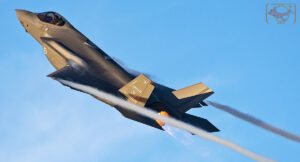
For two-three weeks Exercise Diamond Storm was held at RAAF Base Darwin and Tindal in the Northern Territory another practical element of the AWIC course designed to incorporate all the lessons learnt over the 6 month period the potential AWIC graduates were studying and perfecting their techniques in the air battle space.
After Diamond Storm aircraft from RAAF Base Darwin prepositioned to RAAF Bases Townsville and Amberley in preparation for the early morning strike. Eleven F-35A Lightning II aircraft from No. 2 Operational Conversion Unit, No.77 Squadron and No.75 Squadron arrived on the afternoon of Thursday the 27th, meantime aircraft from 82 Wing consisting of No.1 Squadron F/A-18F Super Hornets and No. 6 Squadron EA-18G Growlers arrived back home at RAAF Base Amberley.
These fighter aircraft were supported by three KC-30A Multirole Tanker Transports from No.33 Squadron, with other Air Mobility Group assets from No. 37 Squadrons C-130-30J Hercules, also an E-7A Wedgetail from No.2 Squadron and P-8A Poseidons from Surveillance and Reconnaissance Group No.2 and No.11 Squadron respectively also arriving at either of the two bases ready for the Dawn Strike exercise. All Squadrons were ready and in place to return to Williamtown the next morning.
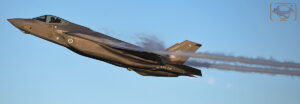
On Friday the 28th just after 6am the first wave from RAAF Base Townsville departed in the dark, 11 F-35’s in total departed supported by a KC-30A tanker. Meanwhile crews from 82 Wings F/A-18F Super Hornets and EA-18G Growlers were gearing up to depart Amberley, a little delayed due to the fog that set in around the base in South East Queensland.
Also preparing to depart were No.36 C-17A Globemaster which would be the first time a Globemaster had participated in Dawn Strike, an C-130-30J Hercules and a E-7A Wedgetail also departed the latter in the command and control role.
All aircraft from the two bases formed to become team Red Air, their role? To conduct a simulated strike on RAAF Base Williamtown.
Williamtown wasn’t left undefended though, just after 7am in the morning nineteen F-35’s, four Hawk Mk.127’s and two E-7A Wedgetails were scrambled to become Blue Air and defend the base against the incoming strike. fifteen RAAF F-35A Lightings were supported by four F-35C Lightnings from the U.S. Navy Air Test and Evaluation Squadron 9, the Squadron is headquartered at Naval Air Station China Lake with Squadrons F-35’s based at Edwards Air Force Base.
This marked the first time a foreign nations aviation assets have participated since the inception of Dawn Strike 42 years ago. VX-9 had been training separately at Williamtown with No.3 Squadron for two weeks prior to the mornings exercise but were included in the exercise giving the AWIC candidates another layer in which to overcome and achieve their objectives.

Off the coast line of New South Wales an air battle ensued with Red Air trying to poke a hole through the Blue Air Defences with beyond visual range and within visual range air manuvers being carried out with F-35’s battling F-35’s trying to open a gap for F/A-18F Super Hornets and EA-18G Growlers to get through to bring air to ground missiles to bear all the while the C-17A Globmaster and C-130J Hercules at low level evading the radar and sensors of simulated enemy air and ground radar systems.
Following this interception, and with the air battle completed it was time to return to Williamtown, all aircraft conducted a high-speed, low-level flyover of the Base known as a beat up to personnel, before landing. The exercise is not an air show or a public flying display, but rather an important and final test for Air Warfare Instructor candidates, and an opportunity for Air Force to recognise their hard work and congratulate them on their accomplishment.
Exercise Dawn Strike has traditionally been held at RAAF Base Williamtown since 1982 which was known at the time as “The Hornets Nest” due to the F/A-18 Classic Hornet aircraft that called the base home, now known as Worimi Country since the retirement of the Classic Hornet.
This years dawn strike was the first time the exercise was held back at its original home since 2019, after the AWIC 2022 course Dawn Strike was held at RAAF Base Amberley due to runway works occurring in 2022 at Williamtown at the time.
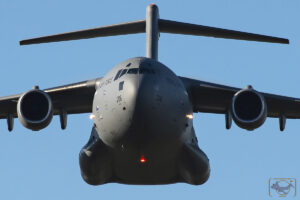
The nature of Exercise Dawn Strike’s flying activity attracts significant interest from within the local Hunter community and aviation enthusiasts alike, with people travelling from interstate to watch the two hour display over the base.
A defence spokesperson spoke to APD and shared the RAAF’s sentiments towards the local community witnessing the mornings events. “Air Force is grateful for the support and understanding of local communities who live close to its bases, especially when it conducts flying activity outside of regular flying hours.
The event returning to RAAF Base Williamtown also symbolises the connection that Air Force has built with the Newcastle community and allows the candidates to celebrate their achievements with the community who have supported RAAF flying since 1941.”
RAAF Wing Commander Stuart Mclean commanding officer of No.88 Squadron which oversees the bi-annual six month AWIC program stated to APD that Dawn Strike is a great time for crews especially those who have been apart of the AWI course, “They’ve had to fight their way back home, where upon arrival into Williamtown they Arte greeted by their family and friends given the last six months have been spent away from their family.”
“The feeling you have when you finish Dawn Strike being greeted by your family and friends is something you will never forget, with the feeling of accomplishment conducting the six month gruelling course and the happiness you have with friends and family is definitely a feeling you won’t forget.”
Shortly after the AWIC students land at Williamtown greetings with those family members have taken place those who have graduated are presented with a covered AWI patch which is something they will wear with pride on their right shoulder for the rest of their career.
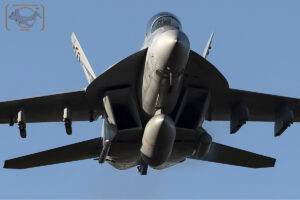


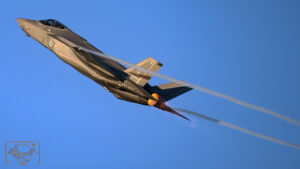
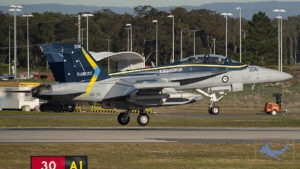

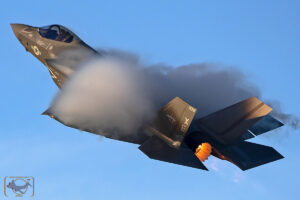


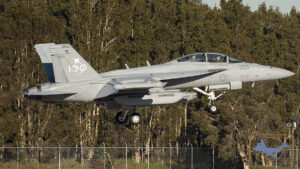

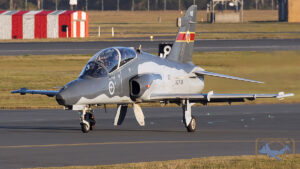








Jaryd Stock is based in Sydney Australia. He has been a die-hard aviation enthusiast from a young age when he was chauffeured around by his father to various airshows and airports around Australia. At his first Airshow he witnessed the awesomeness of a General Dynamics F-111C and immediately fell in love with aviation.
Jaryd picked up a camera at a young age and has never looked back. He now combines photography and writing to highlight “Downunder” aviation; especially U.S. DoD units. Jaryd uses Nikon cameras and lenses.

